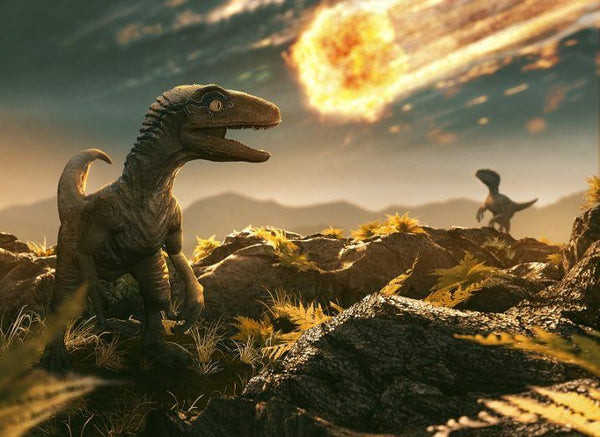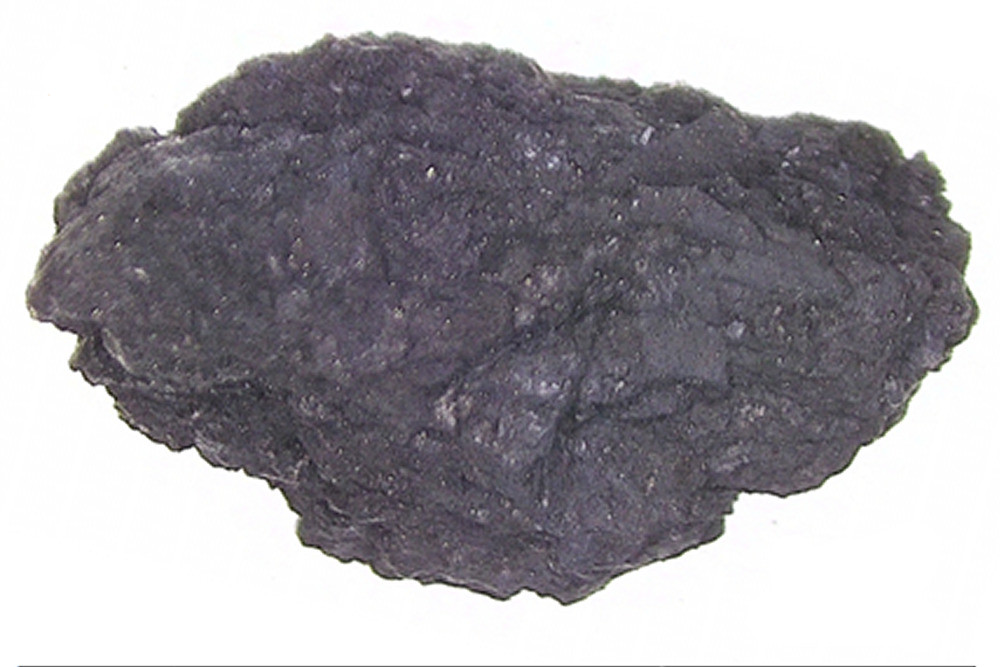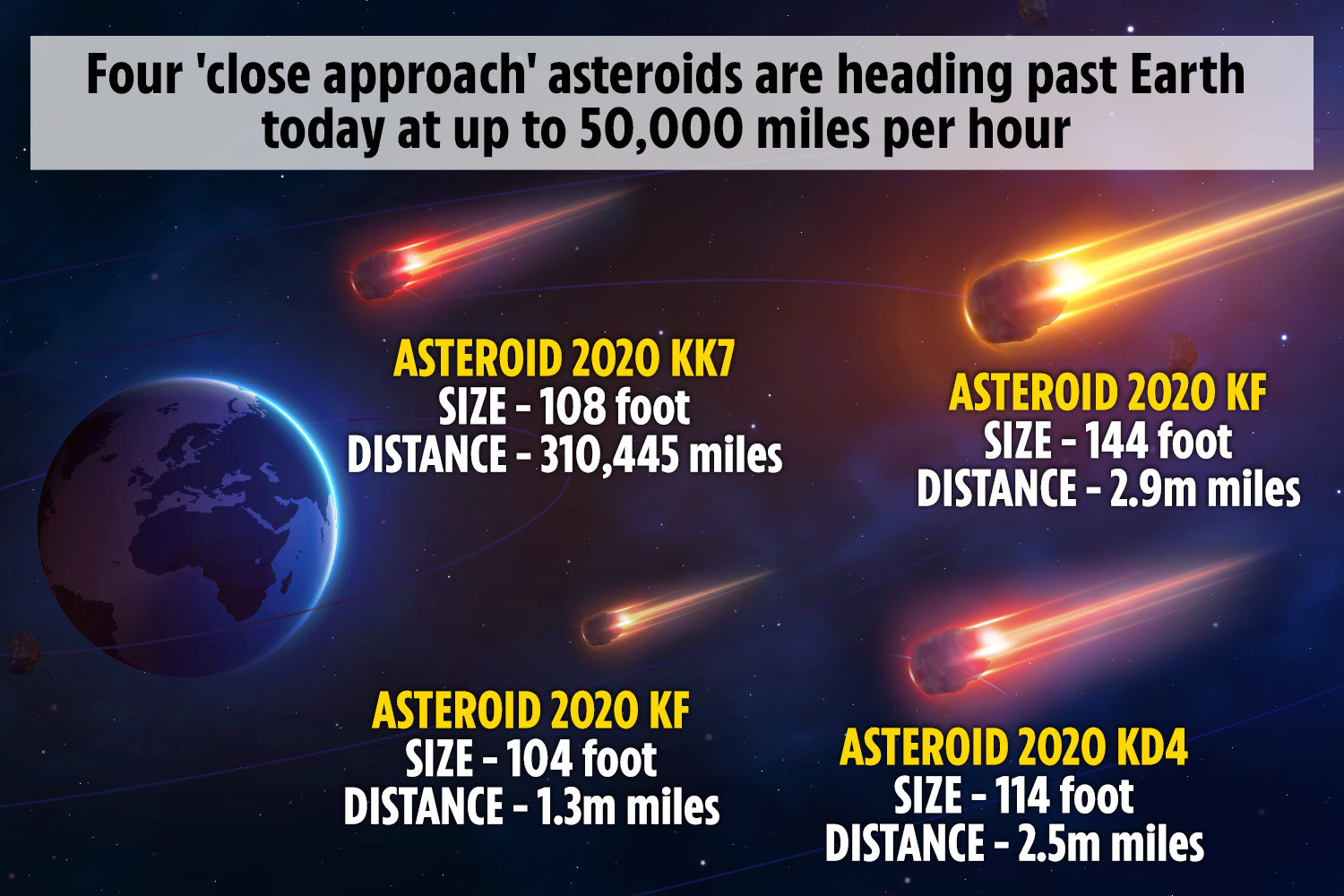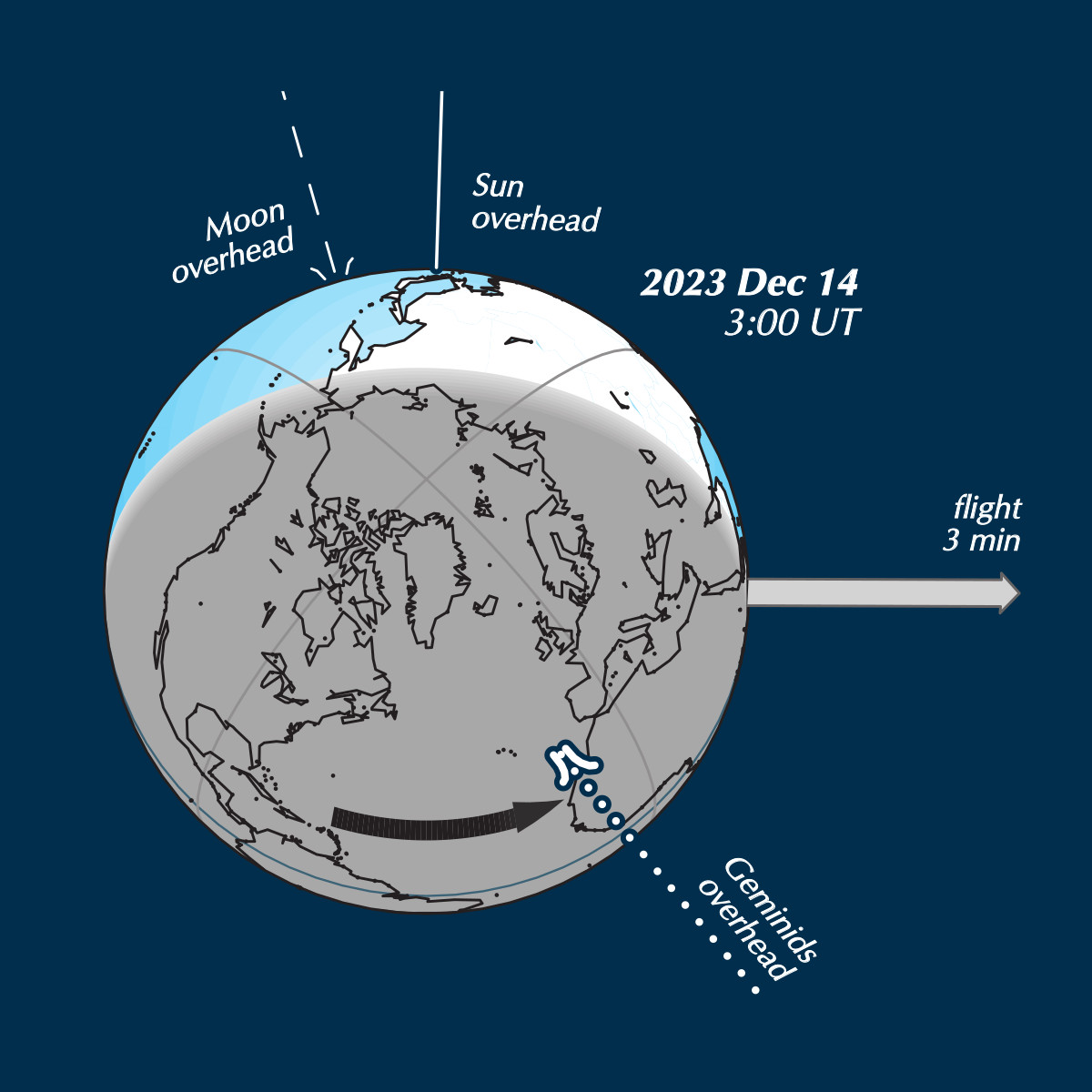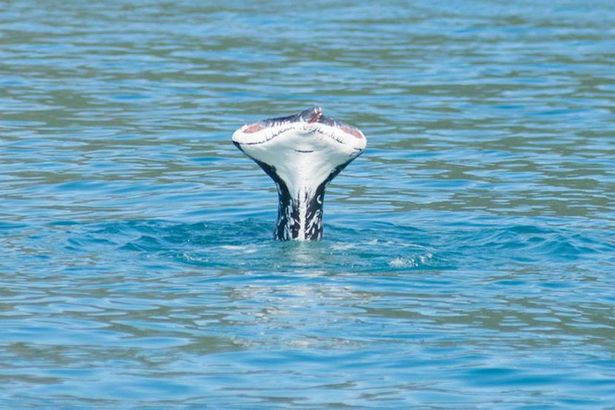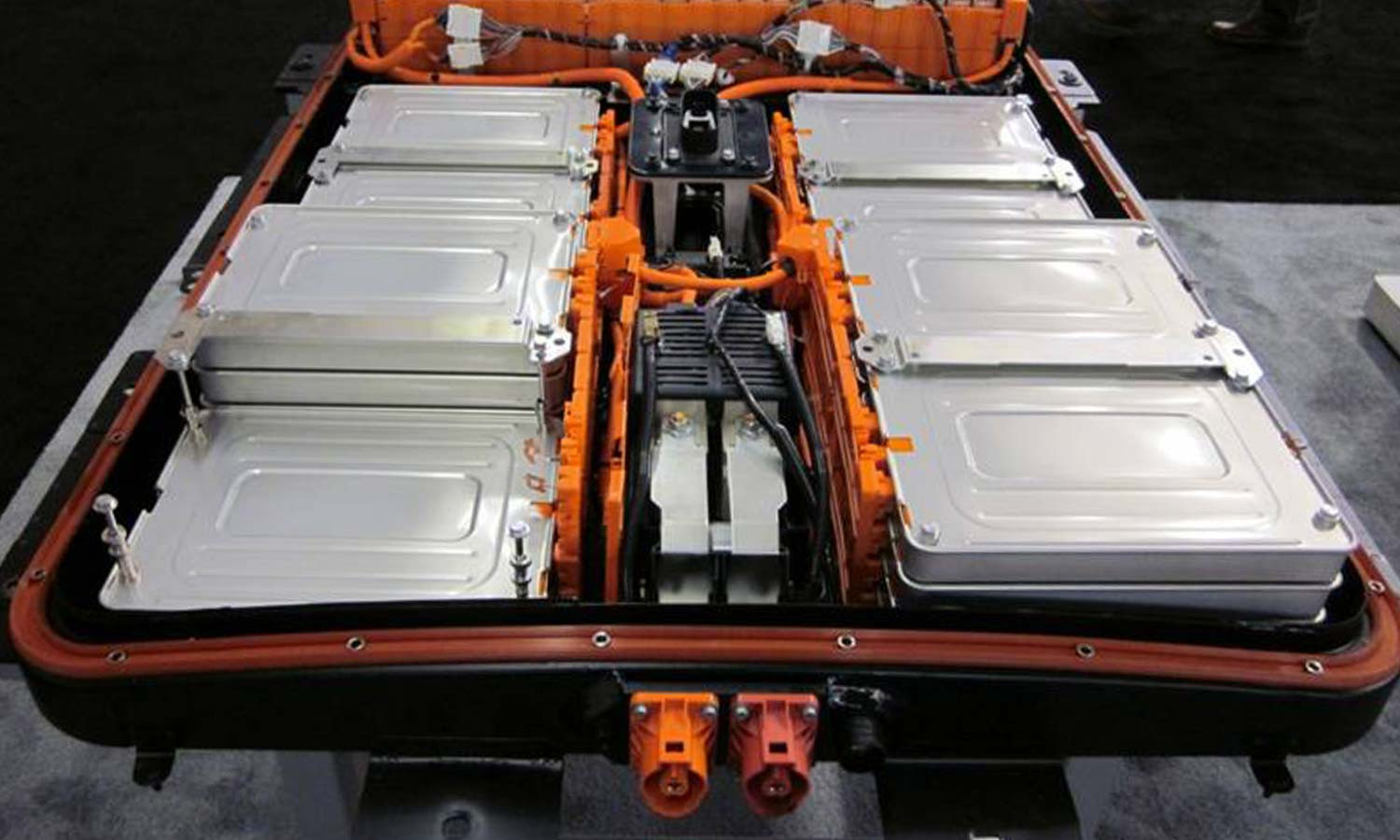Sixty-six million years ago, Earth had a very bad day. A mountain-sized impactor fell out of the sky at kilometers-per-second speed, slamming into the shallow sea off what is now Mexico’s portion of the Yucatán Peninsula. The impact released as much energy as 100 million nuclear bombs, gouging a 200-kilometer-wide, 20-kilometer-deep scar in Earth’s crust and unleashing monstrous earthquakes, tsunamis and firestorms. Global temperatures plunged, and food chains collapsed as planet-smothering plumes of soot and vaporized rock blotted out the sun, driving more than half of then extant species—including the dinosaurs—to extinction. The scattered survivors that arose from the ashes included our mammalian ancestors, setting the stage for a new era of life on Earth.
This planetary cataclysm remained shrouded in mystery until one of those survivors’ distant descendants, physicist Walter Alvarez, pieced together its outline in the 1970s and 1980s. Alvarez and his colleagues discovered a layer of debris laid down in 66-million-year-old rocks around the world that was curiously enriched with elements such as iridium, which is vanishingly rare in Earth’s crust but abundant in asteroids and comets. They eventually linked the layer’s origin to the dinosaur-killing impact and its now submerged giant scar: a site called Chicxulub, which Alvarez dubbed the “Crater of Doom.” But for decades, scientists have debated finer details: Was the impactor an asteroid instead of a comet—and if so, what type? Where in the vastness of space had it come from? And could the telltale iridium and global mass extinction alike have been somehow home-brewed, arising not from the impact but rather from immense volcanic eruptions that spewed rare-element-laced magma from reservoirs in Earth’s mantle?
A study published in Science on August 15 now offers the most definitive answers yet, charting this epochal event’s deep origins through extremely precise measurements of isotopes of ruthenium found in its debris. The work conclusively shows that, like the iridium and other rare elements in Alvarez’s layer, this ruthenium did not come from volcanism but rather originated from a clearly extraterrestrial source. And subtle variations in abundance between the isotopes strongly suggest the Chicxulub impactor that delivered it wasn’t a comet or a run-of-the-mill giant space rock—it was a conspicuously “carbonaceous” asteroid, rich in carbon and organic compounds.
Unraveling the Mystery of the Chicxulub Impactor
The new study’s “interpretation is not new,” says geochemist Richard J. Walker of the University of Maryland, who is unaffiliated with the work, chiefly referring to a 1998 study that reached similar conclusions based on analyzing an isotope of chromium. “But this study presents a much more ironclad determination that the Chicxulub impactor was a carbonaceous asteroid.”
Such asteroids are relatively rare. Thought to have formed in the outer solar system beyond Jupiter before our world itself coalesced, they only reached the inner solar system’s asteroid belt after being hurled there en masse by orbital interactions among the giant planets more than 4.5 billion years ago, just a few million years after the sun began to shine. That bulk import of organic material from the icy outer solar system, scientists say, may have provided the newborn Earth with the crucial chemical building blocks of biology, as well as much of the water that now fills its oceans. In a grand, almost poetic sense, the doom of the dinosaurs and the dawn of mammals were set eons ago by the very same process that helped kick-start life on our planet in the first place.
Ruthenium: A Fingerprint from Space
Ruthenium is a silvery metal that, like iridium and other “platinum group” elements, is scarcely found at all on or near Earth’s surface. This scarcity is because these are siderophile, or iron-loving, elements, and when our fresh-formed world was little more than a partially molten ball of slag, they glommed on to iron and other dense metals in Earth’s interior, sinking to form its inaccessible core. That means almost all the platinum group elements that are now in the crust were delivered there later, from meteorites, asteroids and comets that struck our planet after it had cooled. This makes the elements excellent tracers of impact events throughout most of Earth’s history. For the Chicxulub event, Fischer-Gödde says, “we can basically assume that 100 percent of the ruthenium found in the global boundary layer is from the impactor itself.”
Ruthenium is especially useful, Fischer-Gödde says, because it offers more isotopes to examine than most of its platinum-group kin. In turn, these isotopes are associated with different astrophysical production routes—some, for instance, form rapidly via supernova explosions of short-lived massive stars while others assemble more gradually in the slow-simmering innards of midsize stars. Researchers can calculate the ratios of isotopes that should emerge from these processes, allowing them to cross-check whether any observed variations in abundance are linked to such cosmic effects.
Isotopes as Clues
All these isotopes can find their way into giant molecular clouds on flecks of stardust, ultimately incorporating into the planets, asteroids and comets that are born when such clouds collapse to form new stellar systems. And most importantly, about 15 years ago scientists discovered that asteroids display a curious isotopic dichotomy: the more stony asteroids that formed inward of Jupiter bear one arrangement of isotopic ratios, while the carbonaceous ones that formed farther out exhibit another. Altogether, this is a recipe for using abundance variations in minuscule amounts of isotopic material from any given impactor to determine whether it was carbonaceous—and thus establish the general vicinity where it formed.
“These stellar nucleosynthetic variations in isotopes help trace how different parts of the solar system evolved during its earliest formation,” says James Day, a geochemist at the University of California, San Diego’s Scripps Institution of Oceanography, who was a reviewer for the paper. “What’s so exciting is that Mario and his team have used these ruthenium isotopes as a fingerprint to identify where the Chicxulub impactor came from.”
The Long Road to Discovery
For their study, Fischer-Gödde and his colleagues assayed seven ruthenium isotopes in all using an advanced technique called multicollector inductively coupled plasma mass spectrometry. They sampled from the infamous dinosaur-dooming layer at three different sites around the globe, as well as from two carbonaceous meteorites and five other craters from different impacts that occurred across the past half-billion years. Additionally, they sought ruthenium from far more ancient rocks, circa 3.5 billion years old, which contained debris associated with a flurry of massive impacts from that far-distant time.
“By measuring all seven ruthenium isotopes and checking if their ratios match the patterns expected from astrophysical processes, we can distinguish and rule out terrestrial effects,” Fischer-Gödde says. “That’s why this is like a fingerprint—these ratios are set by things like thermonuclear fusion inside stars that no process on Earth can replicate. We measured, we checked, and it all lines up.... So, for the Chicxulub event, our result isn’t just showing it was a carbonaceous asteroid—it’s also the nail in the coffin for the idea that these platinum-group elements came from volcanism or any other terrestrial origin.”
“For many of these samples, we’re talking about taking a fist-sized piece of material, 20 to 30 grams of rock, and extracting a little speck you probably can’t see without a microscope,” Walker says. “That’s what you have to do to reach this ridiculously high precision of isotopic measurement.”
The Impact's Aftermath
Of the studied impacts from the past half-billion years, only Chicxulub showed a distinctly carbonaceous, outer-solar-system mix of ruthenium isotopes; the other five bore signatures of stony impactors that originate closer to the sun. The ruthenium ratios from the most ancient impacts suggest carbonaceous impactors, too—a finding that is consistent with a wealth of other evidence that the Earth was bombarded with material from the outer solar system during the first billion years or so of its history. This, most experts say, arose from a bizarre dynamical instability that rearranged the orbits of the giant planets shortly after the solar system formed, sending showers of impactors toward the sun. Future work, Fischer-Gödde and others say, could involve studying ruthenium and additional isotopes from a variety of sources—including comets and lunar craters—to further clarify key impact events in Earth’s long history and to pinpoint the exact subtype of carbonaceous asteroid that was responsible for the dinosaurs’ demise.
The Legacy of a Cosmic Collision
Two obvious questions that remain are how the Chicxulub impactor found its way to Earth billions of years after it was ejected from the outer solar system—and when the next similarly sized doomsday rock might strike. Bill Bottke, a planetary scientist at the Southwest Research Institute in Boulder, Colo., who was not part of this study, believes that he and his colleagues already found both answers via dynamical modeling that was presented in a paper published in 2021. “We came up with a good dynamical rationale for where the impactor came from—the central to outer main asteroid belt,” Bottke says. “I would say our work is still the state of the art.”
That 2021 paper also estimated that Chicxulub-class objects should hit Earth just once every 250 million to 500 million years—suggesting that we have good odds for not facing another cataclysmic asteroid impact any time soon.
While carbonaceous chondrites make up the majority of rocks in space, only about 5% of the meteorites that fall to Earth belong to this category. “There is quite some diversity in carbonaceous chondrites, and some of them can smell,” Goderis said. But in the inferno, when the Chicxulub impactor landed, Goderis said, “you probably wouldn’t have had the time for a good sniff.”
Impacts of the scale of Chicxulub happen only every 100 million to 500 million years. But because there is still an outside chance of Earth crossing paths with another asteroid or giant meteorite, Goderis said that it’s good to know “the physical and chemical properties of these objects, to think about how to protect ourselves” from a collision with a large space rock.
Goderis cited the 2022 DART mission, or the Double Asteroid Redirection Test, in which NASA sent a spacecraft to intentionally knock an asteroid off its course. Knowing how different types of asteroids interact with the physical forces around them would be critical for an effective planetary defense operation.
“The carbonaceous chondrite will react completely differently from an ordinary chondrite — it’s much more porous, it’s much more light and it will absorb much more of an impact if you send an object towards it. So, we need to learn about this to have a corresponding response,” Goderis said.




